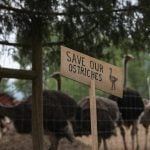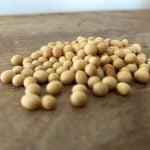During the Soviet era, a perpetual source of amusement was watching the planned economies announce one “Five-year plan” after another, with lofty goals to boost steel production, grow more wheat and so forth.
It was always worth a chuckle because they’d inevitably have just failed to reach the goals of the last five-year plan, yet there they were, doing it all over again.
There are myriad reasons why the planned economies failed — too many to explore on this page. But suffice to say they were mainly the well-known failings of human nature simply expressing themselves.
Read Also

Calling all Co-operator readers
Hey farmers, we want to hear your Manitoba Co-operator stories: the articles that stuck out, the farm history you watched on our pages.
But at the heart of it, the idea of setting a broad goal and having many interested parties working towards it was a good one. Without a plan, it’s pretty hard to make any meaningful progress on a complex topic.
There are plenty of examples here in the capitalist economies where similar, but voluntary, plans have been implemented. And ‘voluntary’ seems to be the key to success, because it allows a decentralized approach where several parties build their own dreams while tapping into the work of the larger group.
The internet and digital age were largely the results of universities and research establishments working together at the behest of the Western governments to design a decentralized communications system that might survive a nuclear war.
Those early researchers might have thought their work would change the world, but it’s pretty unlikely that even the most prescient of them imagined that its primary use would be trading memes and pictures of our suppers, between political sniping and shopping. That undertaking has surely at this point been worth billions, if not trillions, of dollars.
Here the province has made much of its Protein Advantage strategy, seeking to make Manitoba a global leader in plant and animal protein production, announced in 2019.
The rationale behind it seems sound. There’s a growing global need for more protein sources. The province already has considerable expertise in many areas and is rapidly developing new ones in emerging sectors.
And there certainly have been new protein-related enterprises springing up — canola, pea and oat proteins, new processing capacity for the pork sector, and other ventures.
True, some like the Roquette plant at Portage predate the provincial strategy, but one could also argue they were the base to build on.
One of the reasons the strategy has met with success appears to be that it’s cast as wide a net as possible, as Geralyn Wichers reports in our main story in our Sept. 22 issue of the Co-operator. It’s taken what were once competitors — livestock and pulse producers for example — and made them into collaborators.
That dreaded corporate buzzword — synergies — has already begun to emerge. For example, livestock producers are feeding pulse-processing byproducts to their animals in a classic win-win situation. The animal producer gets an affordable and reliable feed source and the processor turns a waste stream into cost recovery or perhaps even modest revenue.
And on the research side, proponents of the effort say they’re seeing the foundation of long-term success and growth. By bringing together researchers, producers and processors, they’re finding many shared interests and concerns, and the academics are gaining deep insight and closer connections within the protein sector.
There have been other past examples of this dynamic at work. The canola industry has a long track record of working co-operatively. Likewise, Pulse Canada has performed many of the same functions. The Canadian International Grains Institute (now part of Cereals Canada) filled a similar role in bolstering Canada’s global reputation as a quality milling and durum wheat producer.
If the Manitoba protein strategy captures even a small portion of the same results — the canola sector, for example, is worth about $27 billion annually to the country — it will be a resounding success.
Part of the recipe for that success, however, is going to be time. These efforts, we’re told, only work if they’re sustained over a longer period.
In today’s quarter-by-quarter, election cycle-by-election cycle-driven world, it’s not entirely clear that commitment will be there.
A project as important as this, with as much potential to contribute to the provincial economy, should have that assurance.
So that’s the next challenge for those involved in this effort — making it self-sustaining so that it’s protected from the winds of change for change’s sake, and can bear fruit for years to come.
And that’s something government can’t do. In the end the sector itself will need to ensure it happens.
















